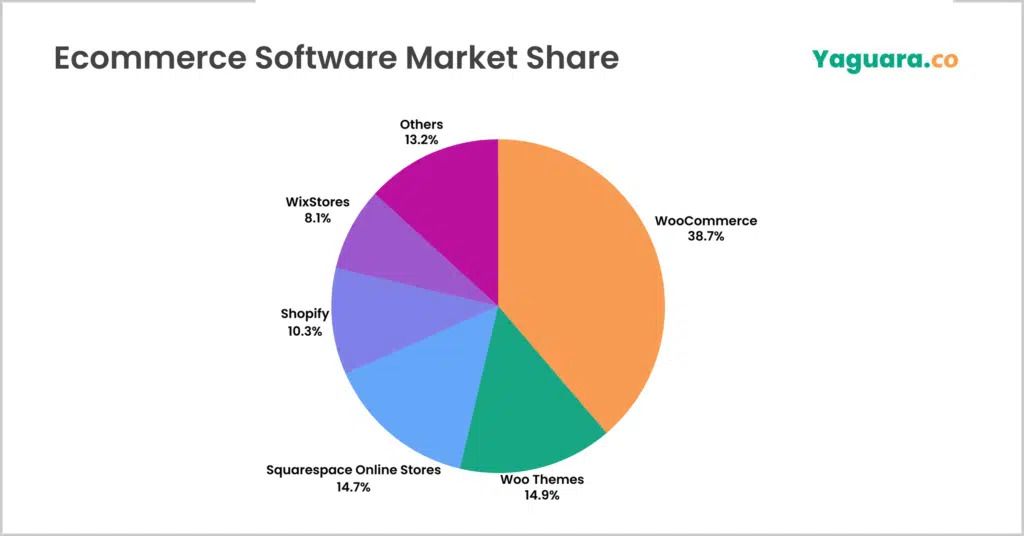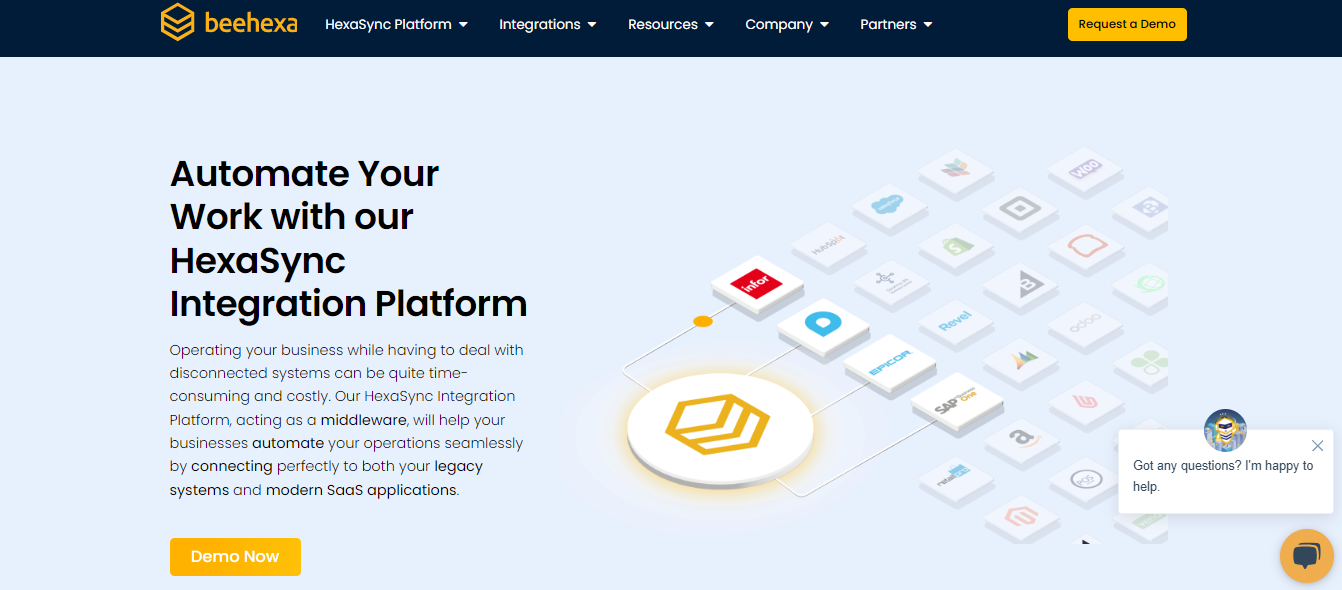With the rise of online shopping trends in recent years following the COVID-19 pandemic, launching an online store is more of a priority than ever. Nowadays, countless e-commerce platforms are available to serve customers, making it extremely simple to choose and build an online store. However, you can not expect customers to randomly find your website if everything in your store is not aligned with the sales plan. As a business owner, you need to consider many factors before setting up an online store, such as SEO, design, pricing, template, etc.
Shopify and Squarespace are two e-commerce platforms that currently hold a significant market share, but both have their own outstanding advantages. This article will thoroughly compare Shopify vs Squarespace to help you choose the right platform for your business.
Shopify vs Squarespace: Overview
What is Shopify?

Shopify is a leading e-commerce platform that offers a variety of online store building and management tools with a user-friendly interface and no technical knowledge required. Launched in 2006, it has supported over one million businesses worldwide. As of 2024, Shopify holds 10.32% of the e-commerce platform market share with more than 4.6 million websites using Shopify globally (according to Yaguara).
What is Squarespace?

Meanwhile, one of Shopify’s competitors, Squarespace, is an all-in-one hosting and website building platform that allows users to create online stores with in-depth marketing without any hassle with technical skills. This platform focuses on providing features to enhance the user experience, including e-commerce capabilities, marketing services, and blogging tools. In 2024, Squarespace held a 14.7% market share, ranking third in the category.

Source: Shopify Market Share & Statistics 2024 (Facts & Data)
Shopify vs Squarespace: Highlight Features
| Features | Shopify | Squarespace |
| Point of sale | – available on all plans | – available on Commerce Basic and Commerce Advanced plans |
| Payment Gateways | – 100+ payment gateways + Shopify Payments + Paypal + Stripe + … | – fewer payment gateways + Stripe + PayPal + Square + … |
| Product variant | – 100 variants/product – 3 variant options/ or products | – 100 variants/product – 6 variant options/ product |
| Dropshipping | – well-suited for dropshipping businesses – integrate dropshipping apps like Oberlo | – dropshipping capabilities are not as developed as Shopify’s. – integrate dropshipping apps like Printful |
| Abandoned cart saving | – available on all paid plans | – only on its Commerce Advanced plan |
| Inventory management | – suitable for both small and large-scale businesses | – sufficient for smaller stores |
| Number of users | – 5 additional staff accounts on Shopify Plan – 15 additional staff accounts on the Advanced Plan – unlimited staff accounts on the Plus plan | – 2 contributors on the Personal plan – unlimited contributors on the rest of the plans |
| Apps & Functions | – 7,000+ apps | – 30 supported extensions |
Shopify vs Squarespace: Ease of Use
Most e-commerce platforms today prioritize building easy-to-use and convenient interfaces, Shopify vs Squarespace is no exception, they have intuitive interfaces and simple setup processes. However, Squarespace has the advantage of furnishing detailed step-by-step instructions and providing extensive support resources for beginners.
In terms of customization, Squarespace stands out by providing an all-in-one solution, while the Shopify platform offers greater flexibility with the ability to integrate multiple apps and plugins.
In short, Shopify vs Squarespace excels in terms of ease of use, but the choice of platform depends on the user’s specific needs and preferences. While Shopify is often preferred for its extensive e-commerce support and capabilities, Squarespace is chosen for its simple and elegant design.
Shopify vs Squarespace: Pricing
Subscription Fee
| Shopify | ||||
| Basic | Shopify | Advanced | Plus | |
| Annually | $19 | $49 | $299 | $2,300 |
| Monthly | $25 | $65 | $399 | $2,300 |
| Squarespace | ||||
| Personal | Business | Commerce Basic | Commerce Advanced | |
| Annually | $16 | $23 | $28 | $52 |
| Monthly | $25 | $36 | $40 | $72 |
Overall, Shopify is ideal for companies focused on scaling their online sales thanks to its robust e-commerce functionalities and scalability that suit any business type. The platform provides multiple payment gateways, 7000+ apps in the Shopify ecosystem, and POS integration capabilities, helping users manage complex e-commerce needs.
Squaresquare, despite offering a lower price point and superior design tools compared to Shopify, lacks the effective scalability of the Shopify platform and is more suitable for smaller businesses that prioritize web design over expansive functionality.
Additional Fees
Regarding additional costs, all Shopify vs Squarespace have such expenses depending on the features and services you choose. For example, Shopify’s transaction fees range from 0.5% to 2% depending on your plan if you do not use Shopify Payments, while Squarespace charges a 3% transaction fee which is waived in Commerce plans. In addition, Shopify incurs other fees such as for apps and integrations, premium themes ($140-$180), domain names (starting at $11/year), payment processing fees, etc. On the other hand, Squarespace users may pay extra costs for integration, domain name ($20-$70/year), email campaigns, abandoned cart recovery, real-time shipping rates, advanced discounts, professional services like design support or SEO consulting, etc.
Shopify vs Squarespace: Design and Templates

In terms of designs and templates, Shopify provides over 70 different free and paid options designed to cater to various industries, and these can be extensively customized. Users can directly customize their Shopify themes from the editor without needing to code, or they can dive into HTML, CSS, and Liquid for advanced customization. With Squarespace, the platform provides more than 100 templates ranging from minimalist to sophisticated, all meticulously crafted with a focus on design coherence.
Shopify vs Squarespace: SEO and Marketing Tools
SEO optimization is one of the factors that greatly impact the success of a business, but it can be a challenging task without the right SEO tools. Fortunately, nowadays eCommerce platforms often come equipped or integrated with SEO optimization tools, as are Shopify and Squarespace although they implement it in two different ways.
While Shopify optimizes SEO by meeting the requirements of Google’s Core Web Vitals requirements, which include the three metrics of page load time, responsiveness, and image stability; Squarespace utilizes SEO tools that are suitable for general users, including Google Analytics, SERP or specialized keyword search tools.
Many businesses consider creating a blog one of the key activities that help drive their business and increase traffic to their website. A blog in conjunction with an e-commerce website can be tremendously effective for marketing. If this is your goal, Squarespace is the right choice as this platform simplifies the blogging process with analytics features, post-scheduling, and post-archiving capabilities.
Shopify vs Squarespace: Integration Capability
The increasing need for businesses to utilize multiple standalone systems with various functions makes choosing an e-commerce platform with strong integration capabilities crucial. With a powerful API that helps developers create flexible custom integrations, Shopify users have the ability to connect to an endless array of external systems and tools, such as ERP, POS, CRM, etc. Furthermore, Shopify’s app store helps companies expand functionalities and link their Shopify store with third-party services. However, a barrier that Shopify users may face is the dependency on numerous apps and integrations, which can lead to increased costs and require advanced technical skills.
Compared to Shopify, Squarespace has more limited integration capabilities but is more tightly managed. This platform focuses on aesthetics and user-friendly design, it always ensures proper functionality without affecting the above factors. Squarespace’s approach guarantees stability and ease of use, making it more suitable for users who need simple solutions.

If you are considering integrating Shopify or Squarespace with external systems, HexaSync is a solution you may want to consider. The HexaSync platform acts as a middleware that helps connect multiple pieces of software through APIs. With the ability to deeply integrate more than 100+ applications, the platform can meet specific user integration requirements and solve complex issues that businesses are facing such as synchronizing orders and products, customers, inventories, loyalty, gift cards, payment, etc. Here are some typical HexaSync Shopify integrations that you can refer to:
- Microsoft Dynamics 365 F&O and Shopify Integration
- Shopify Dynamics 365 Business Central Integration
- Shopify SAP B1 Integration
- Shopify Netsuite Integration
- Shopify Hubspot Integration
- QuickBooks POS Shopify Integration
- Lightspeed Shopify Integration
- Talech Shopify Integration
- Clover Shopify Integration
- Microsoft Dynamics 365 CRM Shopify Integration
Shopify vs Squarespace: Customer Support
| Shopify | Squarespace | |
| Availability and responsiveness of support | 24/7 | 24/7 |
| Types of support offered | – Live chat – EmailPhone | – Email – Live chat support (available Monday through Friday) |
| Extensive Resources | – Articles Guides – Tutorials | – Articles – Video tutorials – Step-by-step guides |
| Community Forums | YES | YES |
Shopify vs Squarespace: Performance and Security

Performance
With an infrastructure built to handle high traffic and transaction volumes, Shopify is renowned for its speed optimization. Moreover, Shopify platform uses a globally distributed server network which helps reduce latency by delivering data from the closest location. With Squarespace, the platform employs advanced image-loading techniques that improve loading times without compromising image quality. However, if you are a business that might scale in the future, Shopify is a more stable choice as it handles much higher traffic volumes compared to Squarespace.
Security
Both Shopify and Squarespace provide robust security measures, including free SSL certificates for all users’ websites that encrypt data transmitted between the user’s browser and the server, ensuring customer information is securely protected. Besides, both are PCI DSS compliant to process transactions securely. While Shopify adheres to Level 1 PCI DSS, which is the highest level of security in the payment card industry, Squarespace does not publish that level of information.
Shopify vs Squarespace: Which Platform is Right for You?
In fact, Shopify vs Squarespace both have their own advantages. The choice of system largely depends on which features you prioritize. If your business needs a powerful e-commerce platform, the Shopify platform is for you. On the contrary, Squarespace is the perfect choice if you are a small to medium-sized business that focuses on designing a beautiful website and marketing tools.
